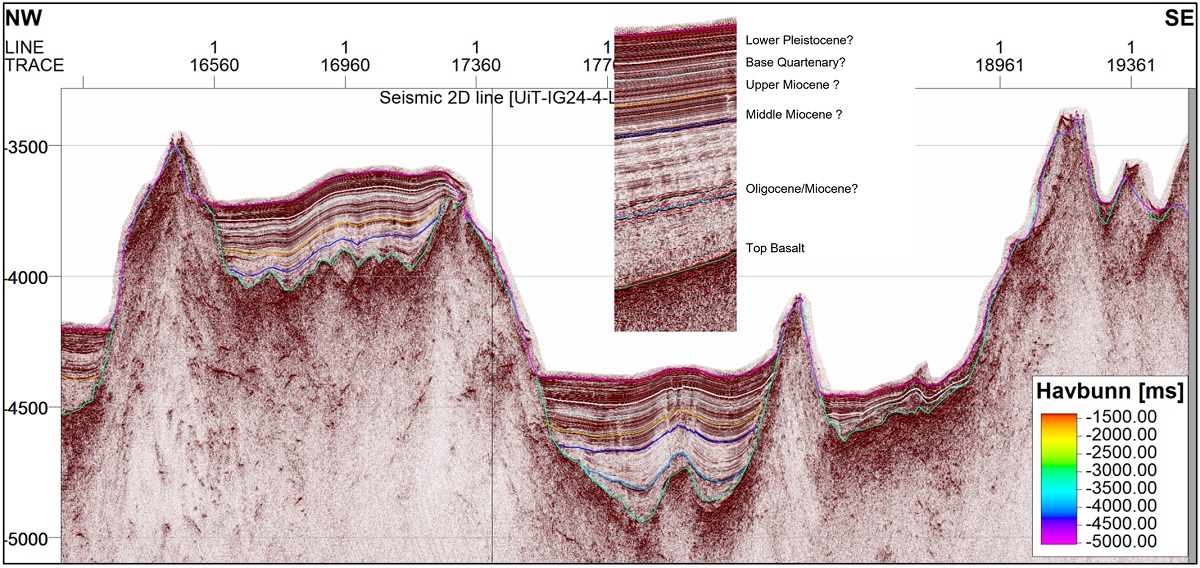Although the long-awaited licensing round for seabed minerals in Norway was paused late last year, data acquisition by the Norwegian Offshore Directorate (NOD) and the universities in Tromsø and Bergen carries on with full strength.
We are pleased to announce that Harald Brekke, Senior Geologist at NOD, will present fresh cruise data and new insights from parts of the Norwegian Exclusive Economic Zone opened for mineral activities at the Deep Sea Minerals 2025 conference in Bergen in April.
The 2024 cruises focused on the western flank of the Mohn’s Ridge and the Norwegian parts of the Greenland Sea. While legacy datasets provide a general understanding of the deep ocean floor’s depths, large seamounts, and the outline of the axial valley of the spreading ridge, they offer limited essential details. Additionally, the sediment successions and their regional distribution remain poorly understood.
In short, the cruise participants have acquired multibeam echosounder data, used a remotely operated vehicle (ROV) to investigate geological landscape evolution, map crust formations, and study biology and habitats in geologically significant areas. Furthermore, the third cruise gathered 2D seismic data from the Lofoten Basin in the east to the outer limits of the continental shelf in the west.
Favorable for mineral deposits
The findings confirmed that the seafloor spreading along the Mohn’s Ridge has occurred in two main phases. Of particular interest is the discovery of east-west trending magmatic ridges, as shown in the map above.
These long-lived ridges (10 – 20 Ma) indicate stable magma sources. These may be viewed as favorable for hydrothermal activity and thus for the formation of seafloor massive sulfide deposits.
Consequently, these ridges are promising targets for exploration companies. The researchers also note that some known sulfide deposits are located where the magma ridges intersect the current axial valley, including Gnitahei, Fåvne, Deep Insight, and Grøntua.
Identifying barren surfaces
The newly acquired seismic data is useful for improved understanding of the sedimentation processes and geological evolution. From a resource perspective, they may aid companies in locating barren basement surfaces that may host manganese crust deposits.
Crusts are only formed in areas without the presence of sediments, which would normally be on seamount surfaces with slopes of at least 20 °.
In conclusion, the NOD, UiT and UiB cruise results contribute to a better understanding of the geological processes shaping the seafloor within the opening area and help identify areas of interest for mineral exploration.
Brekke’s talk will also include plans for upcoming cruises in 2025.
Deep Sea Minerals 2025 will take place in Bergen from 1-3 April. The program and registration page can be found on the conference website.


![window.adn = window.adn || {};
adn.calls = adn.calls || [];
adn.calls.push(function() {
adn.request({
network: "2cddc6",
adUnits: [{
auId: "2e0bfb",
auW: 1230,
auH: 480
}]
});
});
Newly discovered ridges point to greater resource potential](https://geo365.no/wp-content/uploads/2025/02/1100_Brekke-fig-1-1024x617.jpg)